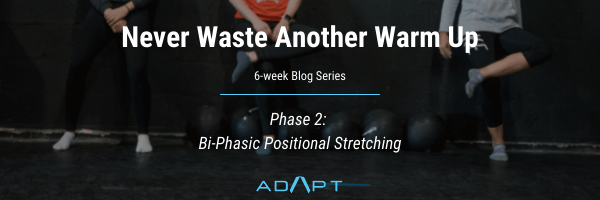
Phase one covered: Target Soft Tissue Work.
We continue to explore how to properly warm-up for any physical activity venture.
Phase 2: Bi-Phasic Positional Stretching
Lifters and strength athletes cringe when they hear the word “stretching” in a dynamic warm up. But contrary to popular belief, there’s actually very little evidence that stretching negatively impacts power, strength, or performance in general.
And anyway, you’re not going to be passively holding stretches for minutes at a time here, or using sloppy compensation patterns to try to “feel” individual muscles stretching. You’re going to put your body into stabilized starting positions (I love half-kneeling, for instance), then generate internal tension throughout the body to wire stability through multiple joints. Then, you’ll add a slight oscillation to enhance the stretch of the targeted tissues.
The “bi-phasic” part of this method just means that you’ll follow up 30-45 seconds of oscillating back and forth with 15-30 seconds of end range stretching, which is still controlled by your muscular tension and body positioning. This stretching phase should take no more than 1-3 minutes to complete.
Both soft tissue work and bi-phasic stretching have the goal of tapping into the power of the parasympathetic nervous system (rest and recover) and allowing the human body to function as authentically as possible. That means you should be working on the same tissue in both Phase 1 and Phase 2 of this sequence for the best results. The two processes go hand in hand, as an integrated unit. If you’re going to foam roll your quads, then stretch them this way afterward!
Yours for greater strength,
– Peter (Head of Personal Training at ADAPT)